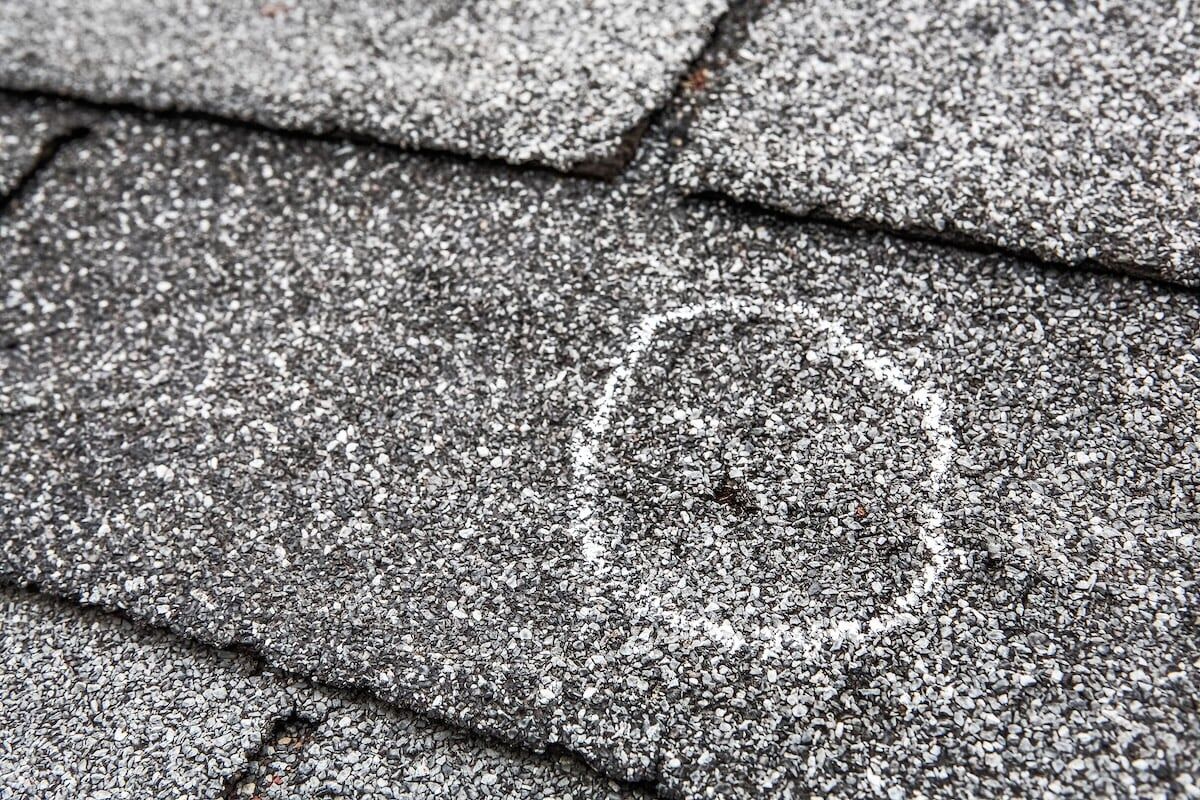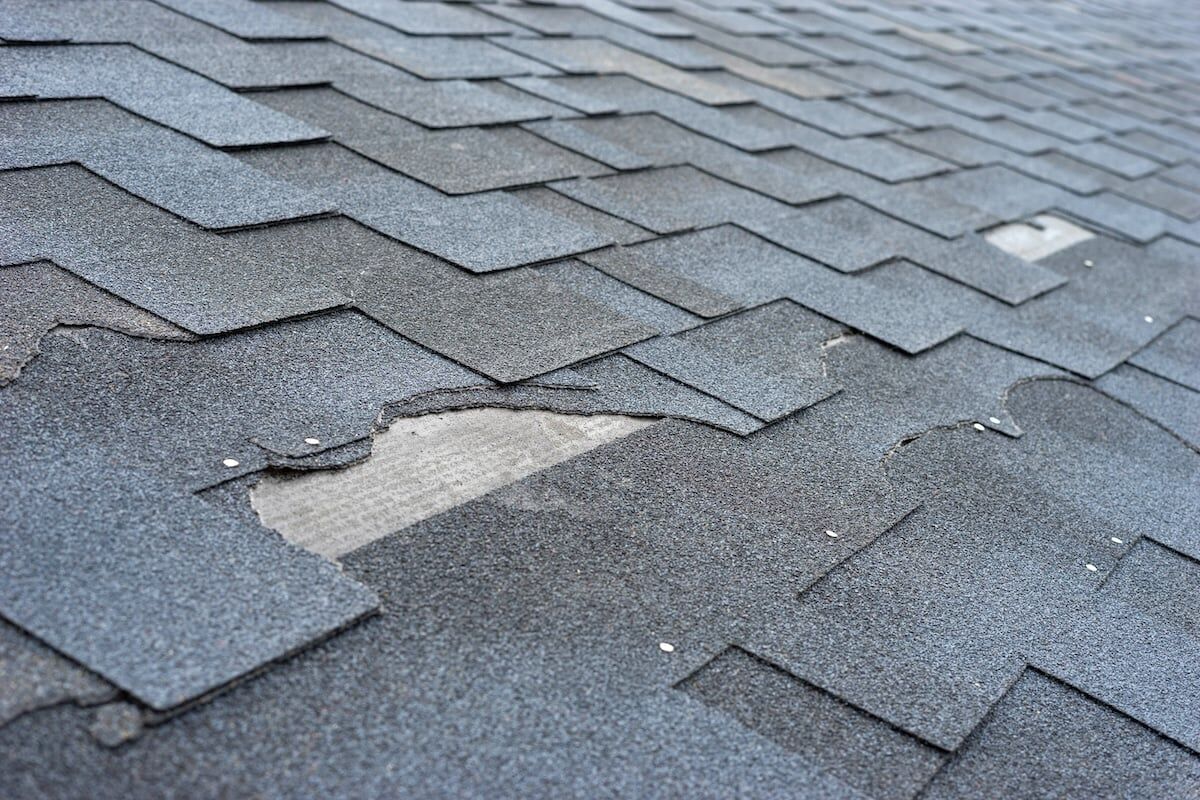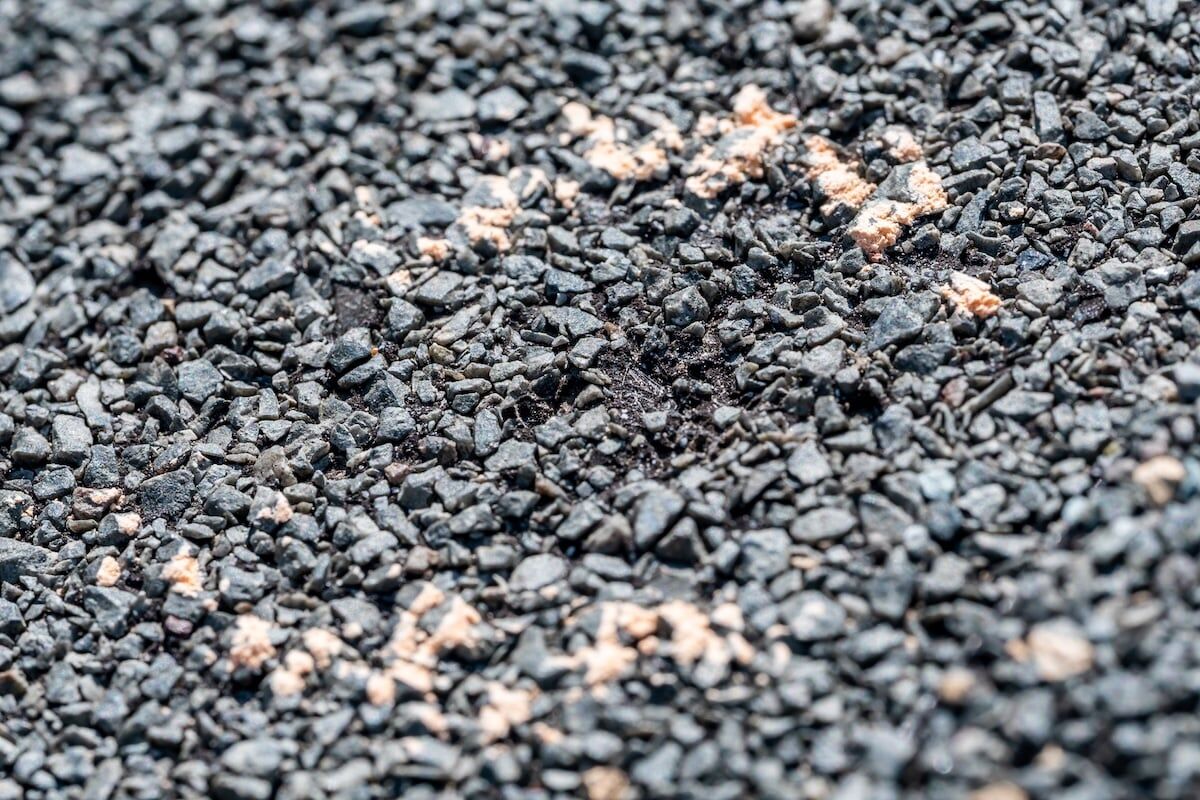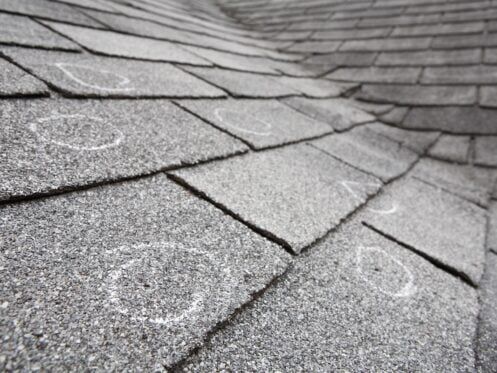Scheduling a hail damage roof inspection after a storm is one of the smartest steps you can take as a homeowner. Hailstorms can leave behind subtle but costly damage that may go unnoticed until it becomes a bigger issue—like leaks, mold, or even structural problems. Knowing what to look for (and what to expect from a professional inspection) can save you time, money, and frustration.
- Hidden damage: Hail can impact your roof without leaving obvious signs visible from the ground.
- Insurance protection: Prompt inspections help document damage for valid claims.
- Long-term value: Catching issues early prevents bigger repair or replacement costs later.
Below, we’ll walk through the signs of hail damage, how inspections work, and what to do next if your roof has been affected.
❗️ Why Hail Damage Is Serious (Even When It Looks Minor)
Hail doesn’t have to be large to cause real problems. Even small hailstones—when paired with wind—can crack shingles, bruise roofing material, or compromise protective granules. These issues may not result in immediate leaks but can shorten your roof’s life and void warranties if not addressed.

Long-Term Risks of Untreated Hail Damage
- Roof leaks: Bruised or cracked shingles lose waterproof protection over time.
- Mold and rot: Moisture can seep in unnoticed, leading to mold or structural decay.
- Decreased insulation: Damaged areas may allow air or heat to escape, raising energy bills.
- Worsened storm impact: A previously damaged roof is more vulnerable during future weather events.
Getting a proper inspection right after a hailstorm ensures you’re not stuck paying for problems that could’ve been caught early.
⛈️ Signs You Might Have Hail Damage
Even before calling a professional, you can do a quick check for red flags from the ground. If you see any of the following signs, schedule a roof inspection as soon as possible.
Exterior Warning Signs
- Dented gutters or downspouts: Impact marks indicate hail strong enough to damage shingles.
- Bruised or cracked siding: Siding damage can mean your roof took similar hits.
- Damaged deck furniture or vehicles: If your car or patio items were impacted, your roof likely was too.
- Granule buildup in gutters: A sudden accumulation of shingle granules is a major clue.
Roof-Specific Clues
- Missing or lifted shingles: This could expose the underlayment or decking.
- Visible dents or pockmarks: Hail can leave circular indents on shingles or metal roofing.
- Soft spots on the roof: These indicate bruised shingles, which lose strength and waterproofing.
- Flashing damage: Dents or tears in metal flashing compromise the roof’s defense system.

🔍 What Happens During a Hail Damage Roof Inspection?
A professional hail damage roof inspection is a detailed process that assesses both visible and hidden damage across your entire roofing system. Here’s what a roofing contractor will typically do.
Step-by-Step Breakdown
- Initial property walkthrough: The inspector evaluates gutters, siding, vents, windows, and other exterior features for impact marks.
- Shingle inspection: They’ll look for bruises, cracks, granule loss, or missing pieces across various roof sections.
- Flashing and vent check: Damage to flashing or vents can lead to leaks and must be repaired quickly.
- Attic assessment: If accessible, inspectors will check for interior moisture, rot, or daylight through the decking.
- Photo documentation: Clear images of damage support insurance claims and repair planning.
- Inspection report: You’ll receive a detailed summary of the damage found, repair recommendations, and potential claim information.
📋 What Do Insurance Adjusters Look For?
If you file a hail damage claim, an insurance adjuster will conduct a similar inspection. Understanding what they look for can help you prepare.
Inspection Criteria
- Hail impact verification: The adjuster will confirm that the marks or damage are consistent with hail, not age or wear.
- Shingle damage counts: They count how many hail strikes appear within a test area (usually 10’x10′).
- Collateral damage: Gutters, siding, or other impacted areas help support the legitimacy of the claim.
- Age and condition of the roof: Older roofs may receive prorated payouts depending on depreciation.
Having a trusted contractor present during the adjuster’s visit can ensure nothing is overlooked and you receive fair compensation.
⭐️ 7 Key Areas to Check for Hail Damage
During or after your inspection, make sure the following areas are thoroughly evaluated:
- Shingles: Look for bruising, granule loss, or cracks that expose underlayment.
- Flashing: Inspect flashing around chimneys, valleys, and roof edges for dents or misalignment.
- Vents and pipe boots: Hail often strikes these areas directly—watch for holes or tears.
- Gutters and downspouts: Dents or loose attachments can compromise water flow.
- Skylights: Examine glass and framing for cracks or moisture penetration.
- Siding and fascia: Exterior wall damage often reflects roof impact severity.
- Attic and ceilings: Check for new stains, damp insulation, or visible light.
These points help ensure a complete hail damage roof inspection that covers more than just surface-level problems.
⏰ How Quickly Should You Act After a Hailstorm?
Timing is everything when it comes to storm damage. Most insurance companies have a limited window for filing a claim after a weather event.
When to Schedule an Inspection
- Immediately after the storm: A quick visual scan is helpful, but don’t rely on it alone.
- Within 3–5 days: Schedule a professional inspection to document and report the damage.
- Within 30–60 days: File any necessary claims during this window for best chances of approval.
- Before the next rainstorm: Damaged roofs become much more vulnerable with each new weather event.
Waiting too long can allow damage to worsen or compromise your eligibility for a claim.

✅ What to Do If You Have Hail Damage
Once you confirm that your roof has been impacted, take these steps:
Take Immediate Action
- Document everything: Photos and videos help strengthen your insurance claim.
- Contact your insurer: Report the damage and begin the claim process.
- Call a professional roofer: They’ll verify the extent of the damage and may even meet with your adjuster.
- Avoid temporary DIY fixes: These can void warranties or interfere with the claim process.
👉 Why Choose a Professional Roofing Company for Inspections?
A licensed, experienced roofing contractor knows what hail damage looks like—even when it’s subtle. They also know how to handle the insurance side, saving you stress.
Benefits of a Pro Inspection
- Trained eyes: Professionals know how to spot damage that homeowners often miss.
- Claim support: Many contractors assist with paperwork and meet adjusters on your behalf.
- Repair readiness: If needed, they can schedule repairs immediately after claim approval.
- Warranty protection: Professionals ensure repairs follow manufacturer specs so warranties remain intact.
🏠 Stay Protected with a Timely Hail Damage Roof Inspection
A hail damage roof inspection isn’t just a precaution—it’s a smart move to protect your home’s integrity, value, and safety. Even minor hail damage can cause major issues if left unaddressed, so don’t wait until water is dripping from your ceiling to take action.
At Indy Roof & Restoration, we specialize in storm damage inspections and work directly with homeowners to provide honest, detailed assessments. From documentation to repairs and insurance guidance, we’re here to walk you through every step.
If you suspect your roof has been hit by hail, don’t wait—schedule a free inspection with Indy Roof & Restoration today and get the peace of mind your home deserves.

